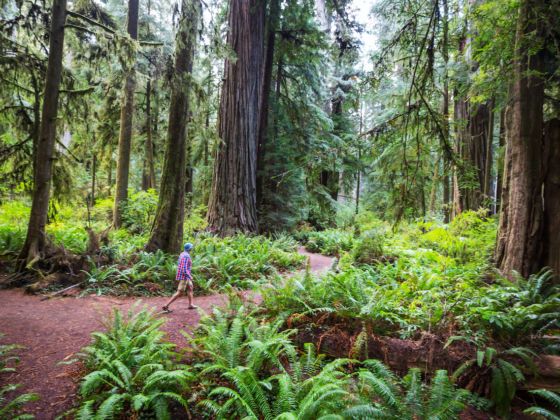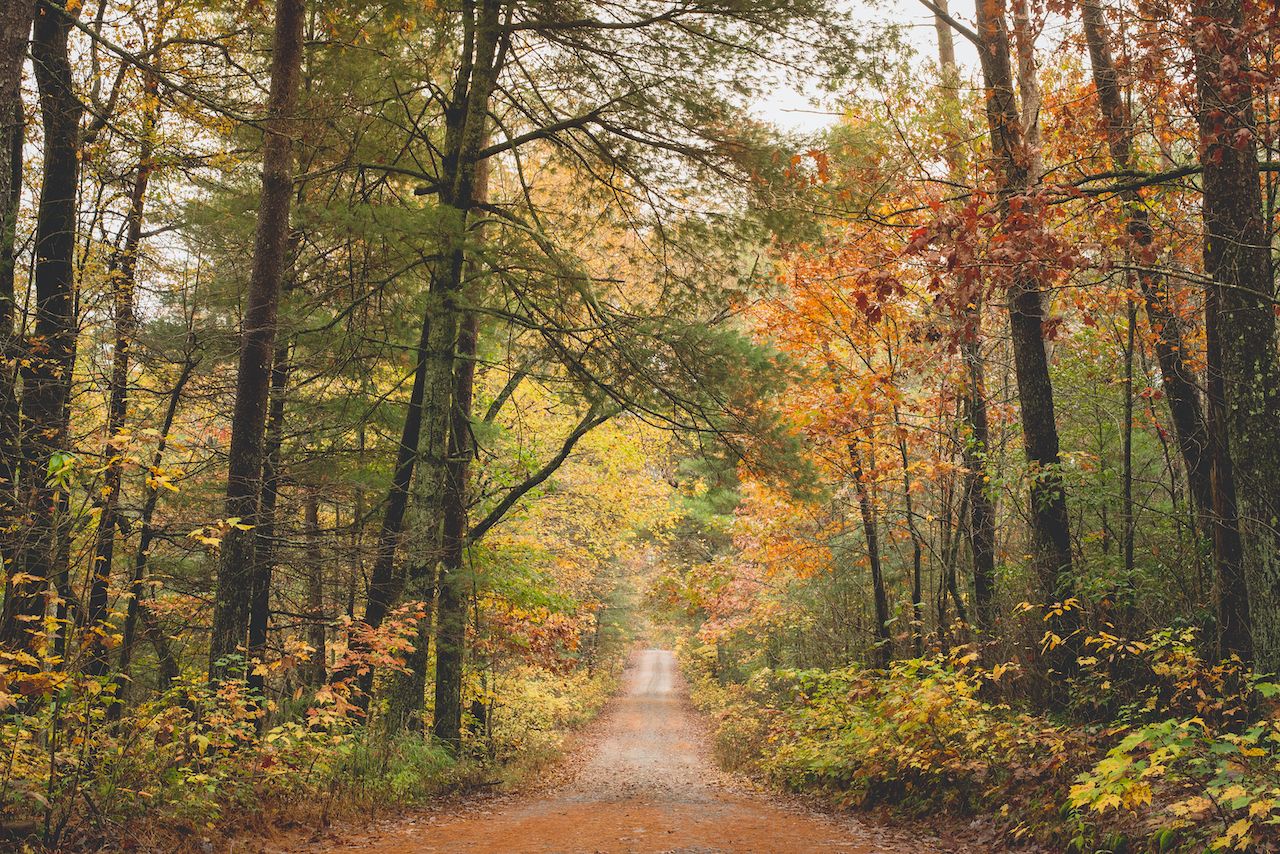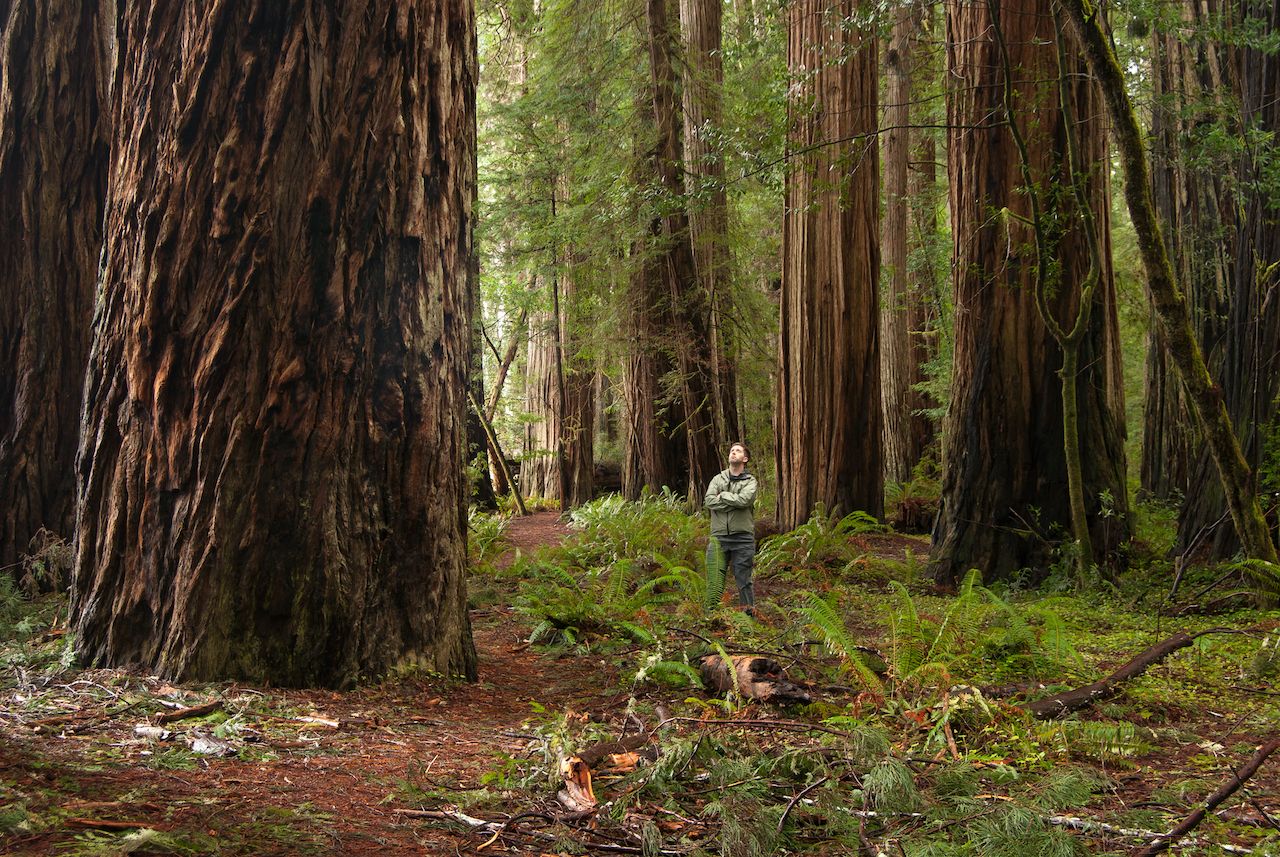I grew up living in a remote forest. My siblings and I spent our youth in the trees, learning their names and history. They were an integral part of our environment, but they also became our childhood friends. We were brought up to respect their wisdom, and with that, they gave our family and house protection from the outside world. After a decade of living outside the wood, we often return and sit under their heavy tunks, regaining the feeling of security and friendship.

The 5 Most Awe-Inspiring Old-Growth Forests in the US
Old-growth forests can feel dense. With years of maturity, they humble a visitor and force us to pause, breathe, and find a sense of inner peace. Although it is contested as to what the classification of “old-growth” is, in general terms, it refers to forests with trees that are aged over 150 years old, that are devoid of human influence, and have a diverse ecosystem. Spanning the US, there are millions of acres of this kind of forestry, with some trees reaching over 300 feet tall.
From Western hemlocks to Sitka spruces and Douglas firs, The American Forests Champion Trees national register contains the largest known trees of more than 700 species found across the country. If you are interested in visiting some of the oldest and most beautiful trees in the US that is a good place to start research. In the meantime, here are some of the most interesting old-growth forests in the US.
1. Chattahoochee National Forest, Georgia

Photo: B Cruz/Shutterstock
Traversing over 750,000 acres of northern Georgia, Chattahoochee National Forest takes its name from the Chattahoochee River that winds through the North Georgia mountains. Home to hemlocks, pines, and hardwoods — some of which are over 160 feet tall and span over three feet in diameter — the forest covers Medlin Mountain.
This region of Georgia is a hiker’s paradise. With the cover of a dense canopy, the national forest has over 450 miles of trails to explore. Visiting in spring is advised when the forest floor is draped in rhododendron bushes and wildflowers, and when you might have a chance to hear the black-throated green warblers and Blackburnian warblers that nest in the remaining old hemlock trees.
2. Tongass National Forest, Alaska

Photo: YegoroV/Shutterstock
Tongass National Forest is the nation’s largest national forest. Measuring almost 17 million acres, it is home to some of the oldest trees on the planet — some of which are estimated at over 800 years old. Here you can also find some of the rarest wildlife in the state, such as the Alexander Archipelago wolf, grizzly bear, and largest population of bald eagles in the world. With the protection of trees — some of which have trunks measuring over 12 feet in diameter — the temperate rainforest is fed by the Icy Straight. This waterway is fueled by glaciers, which, due to our warming climates, have melted, allowing for fresh land that has become home to young forestation and has encouraged the growth of moss, sapling spruce, and fungi.
Nugget Falls is a particularly nice place to visit in the forest. It is located in an area of trees that is aged over 200 years old. Like many of the forests on this list, Tongass is under threat of deforestation, so making time to see some of its beautiful old-growth trees has never been more critical.
3. Allegheny National Forest, Pennsylvania

Photo: Zack Frank/Shutterstock
Allegheny National Forest is the only national forest in Pennsylvania, and it’s located in the foothills of the Appalachian mountains. It is estimated that the forest covers over 517,000 acres of land, and some of the state’s oldest trees can be found in the Hearts Content Recreation Area. Again, you’ll find Eastern hemlocks but also American beech trees — some of which date back over 400 years. The water’s edge is dotted with old white pines that offer shelter to river wildlife. This preserve, in particular, is a perfect place if you are interested in exploring both old and new-growth forestry simultaneously.
4. Adirondack State Park, New York

Photo: Doug Lemke/Shutterstock
Adirondack State Park covers one-third of the state of New York and is home to over 300,000 acres of ancient trees. Due to the forest’s dense nature, many trees escaped loggers, and some of the largest hardwoods in the world can be found along waterways and on ridgelines.
The region is also home to over 2,000 miles of hiking trails that snake through the trees and cater to every skill level. It perhaps goes without saying, but the park is also one of the better places for leaf-peeping in fall, and coupled with the vast amount of camping grounds, it is more than worth visiting during this season. If you do, and you enjoy watersports, it’s worth taking in the forest from a kayak or boat — but don’t skip the chance to get up close to some of the planet’s oldest hardwoods.
5. Jedediah Redwoods State Park, California

Photo: Mason Vranish/Shutterstock
It would be remiss, of course, not to mention on this list Jedediah Redwoods State Park in California. Home to the famous redwoods, here you’ll find one of the 10 largest trees and five of the 10 largest coast redwoods on the planet. The greatest of these is measured at 340 feet tall with a trunk diameter at chest level of 20 feet.
The park is home to 92 redwood groves that span over 9,500 acres of forestry, and throughout the park, you can enjoy over 20 miles of hiking trails. The Smith River — California’s longest free-flowing river — also offers recreational activities such as fishing and kayaking. According to California’s Parks and Recreation department, you can even snorkel. But like all of the old-growth forests listed here, the main attraction is, of course, its ancient trees.